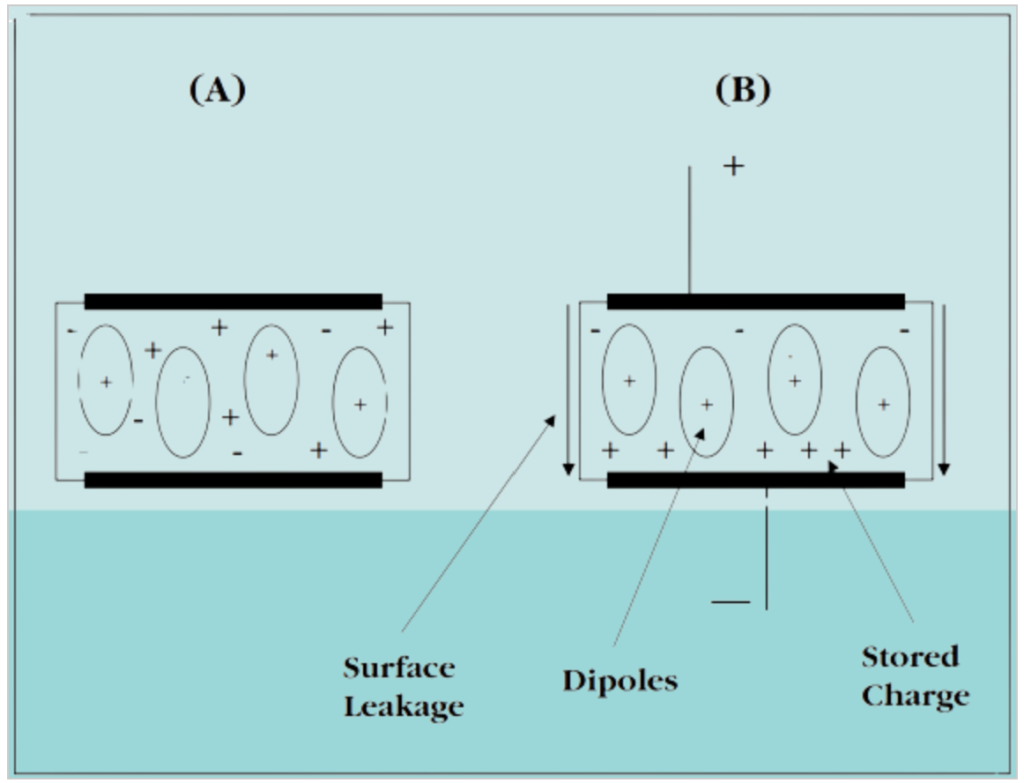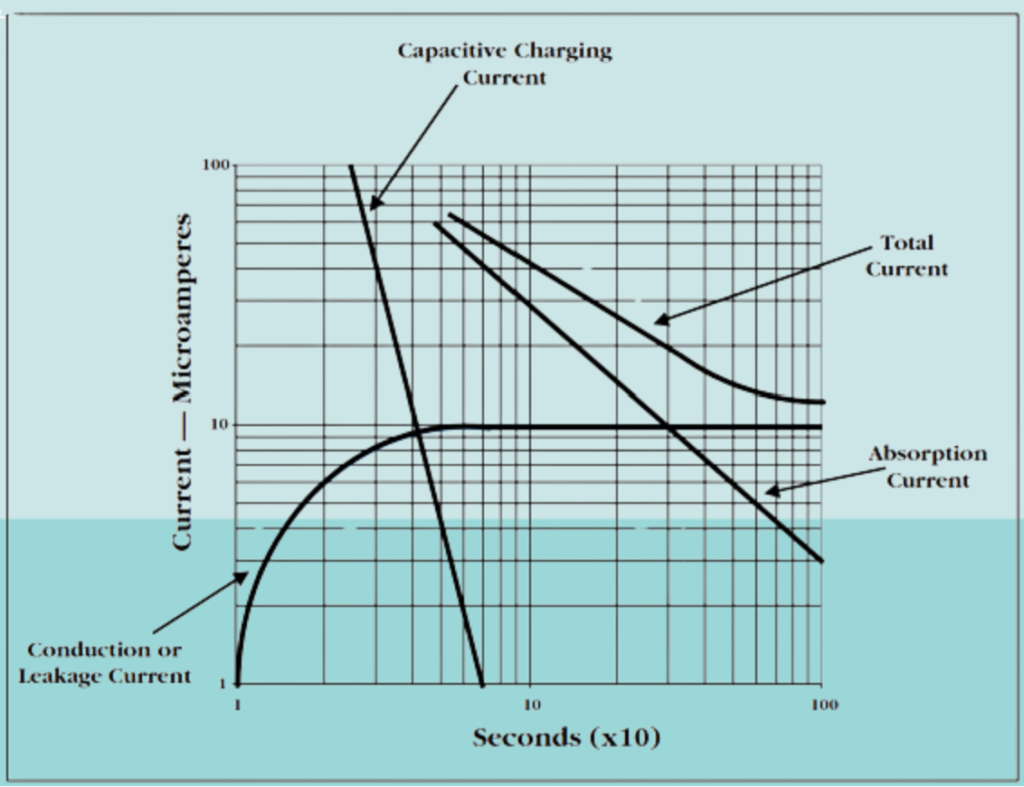When performing insulation testing, it’s essential to consider the various currents that come into play, as these can complicate the measurement process. By understanding these currents, we can better interpret the results of insulation tests and gain insights into the condition of the material being tested.
1. Capacitive Charging Current:
- This current is associated with charging the capacitance of the insulation material under test. When a test voltage is applied, there is an initial surge of current to charge the capacitance, which then decreases exponentially and approaches zero as the insulation becomes fully charged.
- Insulating material behaves similarly to a dielectric in a capacitor when it comes to charging and discharging.
2. Absorption or Polarization Current:
- Components: Absorption current comprises up to three distinct components, each decaying at a decreasing rate over several minutes:
- Drift of Free Electrons: Some current arises from the movement of free electrons through the insulation due to the applied electric field.
- Molecular Distortion: Another component results from molecular distortion caused by the electric field, where electrons shift towards the positive voltage.
- Orientational Polarization: The third component occurs when polarized molecules within the insulation align with the applied electric field. These molecules usually have random orientations but align in the presence of the field.

- Collective Consideration: These three components are typically considered together as a single current. They are primarily influenced by the type and condition of the bonding material within the insulation.
- Time Factor: Unlike capacitive charging current, absorption current persists over an extended period, taking much longer to decay to near-zero levels.
- Moisture and Contaminants: The presence of absorbed moisture and contaminants can increase orientational polarization, enhancing the degree of polarization. Additionally, depolymerization of the insulation can lead to increased absorption current.
- Material Variations: Different materials exhibit varying degrees of these three components. For instance, polyethylene may show little to no polarization absorption.
Understanding these current components is vital because they impact the measured resistance of the insulation. When conducting insulation tests, it’s crucial to consider the time factor and the specific characteristics of the insulation material being tested. By doing so, professionals can make more accurate assessments of the insulation’s health and condition.
Insulation testing involves assessing the behavior of electric currents in insulating materials. Various components of current come into play during these tests, each with its own characteristics. Understanding these components is crucial for accurate assessment and diagnosis of insulation conditions.
3. Surface Leakage Current:
- Surface leakage current occurs because the surface of the insulation is contaminated with moisture or salts. This current remains constant over time and depends on factors like ionization, which, in turn, is influenced by temperature.
- Consideration: It’s often integrated into the total leakage current and not treated separately in measurements.
4. Conduction Current:
- Characteristics: Conduction current flows steadily through the insulation. It is typically represented by a high-value resistor in parallel with the insulation’s capacitance.
- Leakage Current: Conduction current is a component of the leakage current, which is the total current measured when the insulation is fully charged, and absorption has occurred. This total leakage current encompasses both conduction current and surface leakage, with the latter potentially mitigated using a guard terminal (discussed later).
- Measurement: Conduction current, along with the other components, can be measured directly using a microammeter or, in terms of megohms (resistance), with a Megger insulation tester. Some instruments provide options for displaying measurements as current or resistance.
- Time Dependency: It’s essential to recognize that the total current depends on the duration of the applied voltage. According to Ohm’s Law (R = E/I), this relationship theoretically holds when the time is infinite, implying an extended waiting period before taking measurements. Additionally, it relies on starting from a base level of total discharge. Therefore, the initial step in any insulation test is ensuring complete discharge of the insulation.

Important Note:
- Charging Current: The charging current, associated with capacitance charging, diminishes relatively quickly as the tested equipment becomes charged. Larger equipment with more capacitance may require a longer charging time. This current represents stored energy, and for safety reasons, it must be discharged after the test. Fortunately, the discharge of this energy happens relatively swiftly.
- Absorption Current: On the other hand, the absorption current decreases at a slower rate during testing, depending on the specific characteristics of the insulation material. This stored energy needs a more extended period to discharge compared to the charging current.
Understanding these components and their behavior over time is crucial for conducting accurate and meaningful insulation tests, ensuring the safety and reliability of electrical systems.